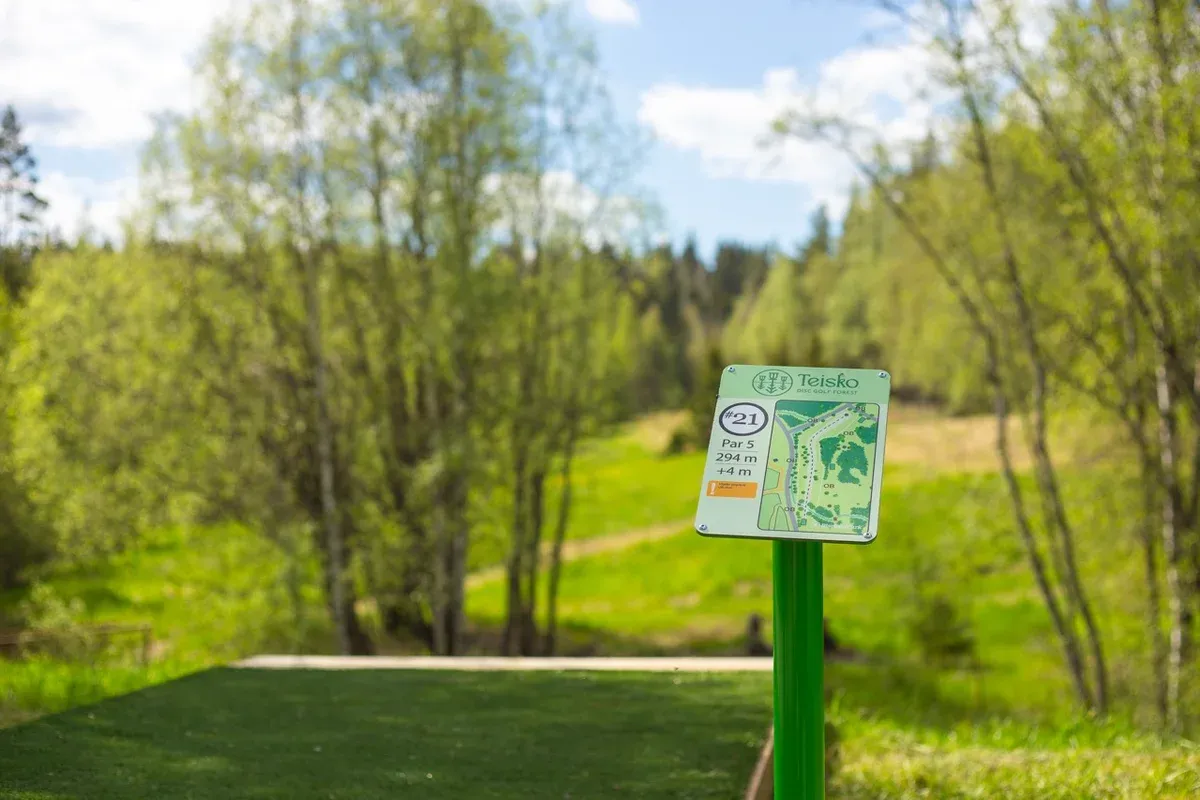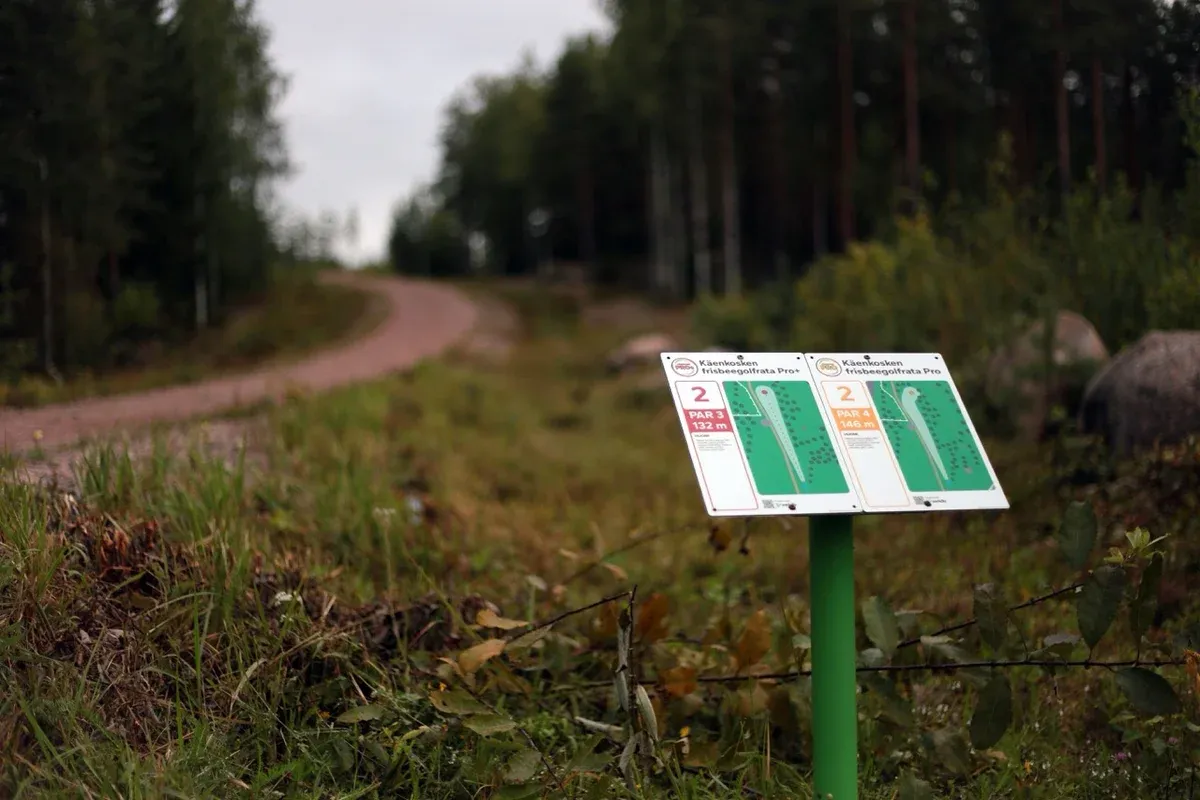When you invest in disc golf tee signs, you’re not just buying something players glance at before throwing. You’re investing in your course’s identity, professionalism, and player experience. Whether you manage a municipal course, club layout, or tournament venue, the materials you choose for signage directly determine how long they last — and how your course looks years down the road.
This guide explains the best materials for disc golf tee signs, comparing real-world options used by leading manufacturers and designers. By the end, you’ll know which materials offer the best balance of durability, weatherproofing, and visual quality for your course or event.
Why Material Choice Matters
Disc golf courses face constant exposure to sun, rain, wind, and freezing temperatures. Cheap materials can fade, peel, or crack within a season, making even the best-designed signage look outdated.
For permanent installations, the right material means a 10-year lifespan with minimal maintenance. For temporary or event signage, it means a professional, consistent look that’s easy to replace or update.
In short: choosing the right tee sign material saves you money, maintains course quality, and shows players and sponsors that your course is built to last.
The Most Common Materials for Disc Golf Tee Signs
1. Powder-Coated Metal Body with Laminated Map Plate
Used by leading brands like DiscGolfPark, this is the benchmark for professional, long-term signage. The metal body is powder-coated to resist corrosion and topped with a laminated, UV-protected print plate that displays the hole map and course information.
Pros:
- Unmatched durability and weather resistance
- Professional look that maintains color and detail for years
- Strong structure and minimal maintenance
- UV lamination protects against fading and peeling
Cons:
- Higher upfront cost
- Heavier, requires professional installation
Best for: Permanent installations, municipal or championship-level courses, and clubs seeking the most professional appearance.

2. Aluminum Composite (Dibond / ACM)
A favorite among custom signage manufacturers, Aluminum Composite Material (ACM) consists of two thin aluminum sheets bonded to a polyethylene core. It offers a great balance between rigidity, weight, and cost.
Pros:
- Long lifespan and good UV/weather resistance
- Lighter and easier to handle than solid metal
- Affordable and widely available
Cons:
- Edges can delaminate if exposed to moisture
- May bend slightly in strong winds if not mounted securely
Best for: Club or city courses that want professional results with moderate budgets.
3. Acrylic (Plexiglass)
Acrylic offers a sleek, modern look and excellent print clarity, but it’s not as rugged as metal or composite options. It’s best suited for sheltered or indoor displays (for example, caddie book info boards). It is also a good option to set up temporary signage when you are waiting for the final versions.
Pros:
- High visual clarity and clean finish
- Excellent print detail and gloss
Cons:
- Brittle in cold climates
- Can scratch or crack from impacts or vandalism
- Not ideal for full outdoor exposure
Best for: Indoor or protected course areas, kiosks, or information boards.
4. Polycarbonate and Plastic Composites
Many local courses or temporary layouts use plastic-based signage because it’s lightweight and inexpensive. However, these materials degrade faster and lose their professional look quickly if not UV-protected.
Pros:
- Affordable and easy to install
- Flexible for temporary or rotating layouts
Cons:
- Fades, warps, or becomes brittle over time
- Limited UV and impact resistance
Best for: Temporary tournament layouts or budget-conscious projects.
5. Laminated Vinyl on Rigid Backing
This method combines printed, laminated vinyl (for the design) with a stable backing like aluminum or composite. It’s a hybrid solution — flexible, customizable, and cost-efficient.
Pros:
- Great color vibrancy and detail
- Easy to reprint and replace the vinyl layer without changing the sign body
- Can be paired with durable backings (metal or composite) for long life
Cons:
- Laminate edges can peel if not sealed properly
- Slightly shorter lifespan than direct-printed metal
Best for: Courses that want flexibility or plan to update designs often (e.g., sponsor changes, new layouts).
6. Treated Wood (Rustic Option)
While rare in modern courses, some community or park-style layouts still use wood for a natural aesthetic. With proper treatment and sealing, it can last several years — but maintenance is ongoing.
Pros:
- Natural look that fits rustic settings
- Low initial material cost
Cons:
- Requires regular sealing and maintenance
- Vulnerable to rot, mold, and UV damage
- Warps easily in wet or cold climates
Best for: Private or themed courses that prioritize aesthetics over lifespan.
Weatherproofing Tips for Long-Lasting Signage
Even the best materials benefit from proper installation and maintenance.
- Seal edges and mounting points to prevent water intrusion.
- Use UV-resistant inks or coatings to keep colors vibrant.
- Avoid direct contact between metal and soil to reduce corrosion.
- Inspect signs annually — replace laminate overlays if needed.
- Clean with gentle soap instead of solvents that degrade coatings.
Pro tip: Rounded corners on tee signs prevent peeling and increase longevity.
Recommended Materials by Use Case
| Course Type | Best Material | Expected Lifespan | Notes |
|---|---|---|---|
| Permanent / Championship | Powder-coated metal + laminate | 10+ years | Highest durability, premium look |
| Club / Municipal | Aluminum Composite (ACM/Dibond) | 5–10 years | Great cost-performance ratio |
| Temporary / Event Layouts | Laminated vinyl or plastic composite | 1–3 years | Affordable and replaceable |
| Indoor / Kiosk | Acrylic or Plexiglass | 5+ years | Best for protected use |
| Rustic / Park Course | Treated wood | 2–5 years | Requires maintenance |
How Parkdly Fits Into the Process
Once you’ve decided on materials, the next step is design — and that’s where Parkdly comes in.
Parkdly automatically generates print-ready signage that works seamlessly with any of the materials mentioned above. Whether you’re printing directly on metal or creating laminated overlays, Parkdly ensures that every tee sign, course map, and sponsor logo aligns perfectly to your specifications.
It’s the easiest way to create consistent, professional, and durable signage for your course — whether permanent or temporary.
Explore our Disc Golf Tee Sign Templates or get started with Parkdly Studio.
Final Thoughts
The material you choose for your tee signs will determine how your course looks and feels for years. Investing in durability means fewer replacements, less maintenance, and a more professional impression for players, sponsors, and the community.
Whether you’re managing a small club course or hosting the next major tournament, well-designed, weatherproof signage is worth every euro.
Ready to get started?
Design your tee signs today with Parkdly Studio and choose the perfect material to match your course’s style and longevity goals.
Read more about disc golf signage here: Disc Golf Signage & Course Maps: Complete Guide


